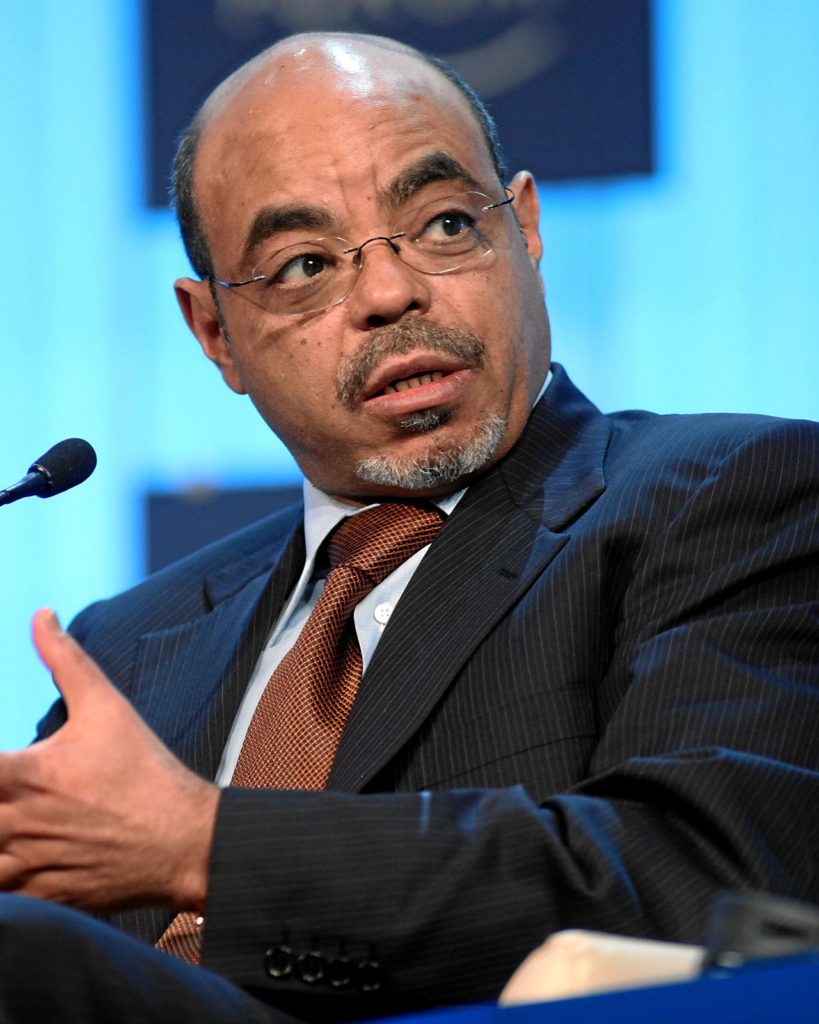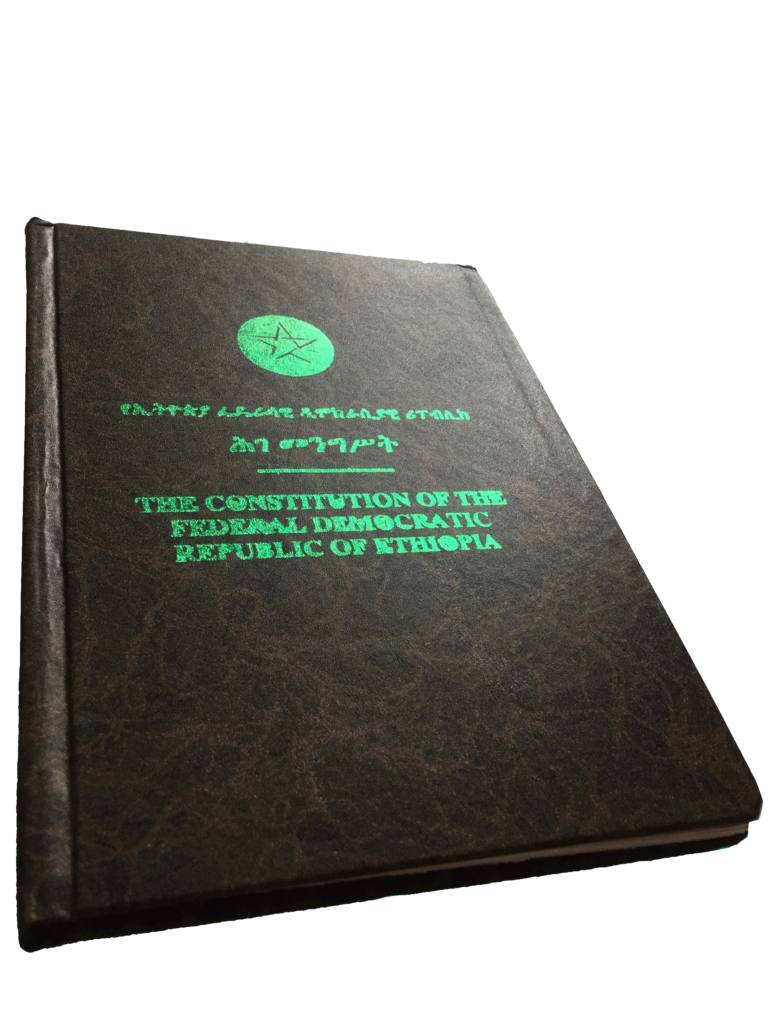This article was originally published in the 8th issue (October 2017) of The Ethiopian Messenger, the quarterly magazine of the Embassy of Ethiopia in Brussels.
The current developmental efforts of Ethiopia dates back from the end of the Derg regime, when a coalition of resistance fighters overthrew the oppressive and brutal communist junta which divided the country and failed to lead to create a stable and prosperous nation. Since the establishment of the Federal Democratic Republic of Ethiopia in 1991 and the adoption of the 1995 Constitution, the country has been fighting against its only real enemies: poverty and the lack of good governance.

The post-Cold War Era’s surge in conflicts and civil wars that fragmented weak states in smaller entities has often been simplistically blamed on ethnic or religious strife. However, countries like Ethiopia demonstrate that dysfunctional governance, inefficient institution and societal frustrations are much more lethal than cultural or ethnic diversity. After the end of the Cold war, the African continent was particularly affected by protracted wars which claimed the lives of millions of innocent civilians, considerably damaged their environments and destroyed their young economies.
From the 1970s to the late 1990s, the accumulation of grievances fostered nationalism and tensions on many countries, which resulted in some of the bloodiest civil wars in human history and forced the international community to adopt self-determination as an integral part of the international law. Sadly, while a high number of emerging and developing countries being integrated into the global market and making technological progress, the African continent is still not entirely immune from the evils of civil war, destruction and displacement.
What went wrong?
For decades, Ethiopia suffered from the evils of totalitarianism, which resulted in a three-decade-long bloody civil war. The conflict did not only cripple the politico- economic apparatus of the country, but also impacted its territorial sovereignty with the secession of Eritrea in 1991. Prior to the end of the civil war, neither the Derg regime, who took power from Emperor Haile Selessaie in 1978, nor the Imperial regime tolerated opposition or dissidents.
The suppression and oppression of ethnic identities in the country borne armed liberation struggles, particularly in the northern part of the country, with the creation of the Tigrayan People’s Liberation Front (TPLF). The North’s initial struggle progressively came to engulf all major ethnic groups of the country to stand in line with the TPLF. The Derg regime waged a full-scale, fratricide war for years against the various nationalities of the country, with fellow countrymen fighting each other because of their divergent views for the future of Ethiopia.
Peace negotiations failed one after another, as the regime chose to crush the liberation movement by deploying its considerable military strength, as the Communist Derg regime had been working for years on building one of the strongest military power in Africa.
War games before Development
Under the leadership of Mengistu Hailemariam, the Derg managed to establish powerful military capabilities at the expense of the socio-economic well-being of its citizens. All policy direction, as well as bilateral and multilateral cooperation during that time were mainly defined by the war, with the exclusive objective of crushing the rebellion. Eventually, this obsession jeopardized the very existence of the country, which was affected by its deadliest famine in the 1980s, adding thousands of deaths to the lives already lost in the scourge of civil war. The “Everything to the war front” motto of the regime weakened Ethiopia’s energy and its meager economic resources that otherwise could have been directed to the development of the country. Too busy dealing with the fierce struggle movement in the northern part of the country, the Derg regime neglected institutions and infrastructure crucial for development and failed to create a stable and prosperous nation.
In addition to destabilizing the country itself, the Communist junta was also a major destabilizing power in the Horn of Africa, in a similar way as the incumbent regime of Eritrea. The country was exposed to all sort evils of maladministration. Poverty, ethnic cleansing and arbitrary killing were common under the Derg regime. Conscription and political torture pushed many of Ethiopia’s children to leave the country, taking with them knowledge and qualifications essential for its development.
Missing Rights
The concepts of democracy and development were also alien to this administration whose main preoccupation was terrorizing its own people. Both the real or perceived relations of power and subordination among the peoples of Ethiopia led to systematic abuse and injustice. Human rights, democratization and freedom of religion were completely suppressed, placing a one-man political structure over the rule of law. Executing and imprisoning tens of thousands of its opponents without trial, designating neighboring countries and imperialism as the enemies of the country and supporting irredentist movements in the Horn of Africa were other characteristics of the regime. Assessing the fragile situation of the country, the government of Somalia led by Mohamed Siad Barre waged full-scale war against Ethiopia in 1977-78.
However, the contribution of the Derg in strengthening Pan- Africanism is worth mentioning. The late PM Meles Zenawi himself noted that “irrespective of what government ruled Ethiopia, Ethiopia has always been committed … Internally Mengestu was a butcher, but on the issue of Africa, Mengstu was as solid as Haile Selassie was”. The regime also has a good track record of reducing the illiteracy rate via basic education. But these qualities do not compensate for the years of development lost by the regime’s leadership until it was overthrown by the EPRDF and ELF in 1991.
The Prospects of Ethiopian revival
The toppling of the Derg’s powerful army by the liberation movement created worry as to the future of the country. After decades of civil war, few Ethiopians could perceive the hope and possibilities offered by the new government. Various experts even predicted the full-scale disintegration of the country. As a first step toward normalcy and stability, popular consultations were made to integrate the views of the people into the future of Ethiopia. Federalism came to be the political prescription to heal the wounds of a nation inflicted to years of suppression of its multicultural nature.
The proclaimed Constitution of 1995 established not only the Federal Democratic Republic of Ethiopia, but also guaranteed all political, social and economic rights of the people, which had been denied for long.

Poverty, a common enemy
The new structures of the state were established to respect the free will of the Ethiopian people determined and create one political and economic community. Self-governance and determination up to secession, decentralization of power and human rights are the salient features of the Constitution. After dedicating the first post-war decade to the stabilization of the country, the government was able to turn itself towards economic development. The new state had inherited from the Derg a troubled, poor and devastated country. The EPRDF leadership had no choice but to face the undeniable and sad reality of the country.
In these conditions, the persistence of poverty and the absence of good governance and democracy were quickly identified as the sole enemies of Ethiopia, and like in any war against a foreign enemy, winning these evils was considered as a matter of survival. The depth of this war was best expressed by former Prime Minister Meles Zenawi, who stated: “If we must shoot and kill, we chose to shoot at poverty.” Over the years, the Agricultural- led Industrialization policy, taking the state investment and private sector as the engine of the economy, pushing for industrial development, attracting investments and heavily investing in education and health policies started to bear fruits as millions were lifted from the quagmire of poverty, as proved by Ethiopia’s MDG’s achievements. As a country, Ethiopia managed to register impressive economic developments and attracted FDI.
Opening to the world
Thanks to this remarkable transformation, today’s Ethiopia is not anymore the weakened Ethiopia of the 1980s. Imperialism and our neighboring countries are no more seen as our enemies. Contrary to past governments where all attention focused on challenges at home and minimizing external threats in relation to it, Ethiopia is now investing in mutually beneficial relationships and regional economic integration to enhance its own and its neighbors’ peace and security. Its foreign policy direction is centered on Business and Economic diplomacy. Peace and security were also prioritized to swipe our fight against poverty and backwardness. The Ethiopian people is now capable of managing gigantic projects such as the Great Ethiopian Renaissance Dam from their own coffers. The peaceful atmosphere of the country is allowing its citizens to tirelessly working to make Ethiopia great again. The consecutive double-digits economic growth of the last fifteen years enabled the country to inject its own finance into drought relief efforts, which was previously carried solely by the international aid. Amid stiff global competition to attract FDI, Ethiopia is now a country that managed to attract investors and create job opportunities for its nationals. While taking part in shouldering Africa’s peace and development and being vocal on the global stage, Ethiopia is sheltering over 800,000 migrants fleeing from neighboring countries.
The road ahead
However, Ethiopia’s path to economic development and democratization is not a smooth sail and difficulties remain. Both the internal and external situations affected Ethiopia’s struggle towards creating a strong nation. We have learned from our history and even from the invasion by the Eritrean government that our own internal situation determines its survival. Being located in the Horn of Africa in itself is a major challenge. The fragility of Somalia, South Sudan, Eritrea, the situation in Yemen and the recent Gulf crisis all pose a serious threat to Ethiopia. The government is well aware that sustaining our peace and development internally will not be sufficient unless it is reinforced by the stability and development of our respective neighbors.
Internally, the issues related to good governance, corruption, abuse of political power and mismanagement, extremism and terrorism remains our Achilles heel. The policies we have pursuing are still bearing fruits. However, there are visible hiccups in their implementation. The sporadic unrest that claimed the lives of our nationals and destructed properties in the country is mainly linked to this matter despite some external involvement. Taking this into account, the government swiftly evaluated itself and came up with deep renewals measures coupled with mass consultation. The deep renewal measures intend to address the shortcomings witnessed in terms of socio-economic and political challenges. More than ever, the political dialogue between the government and political parties is progressing to expand the political space and deepen our determination for democratization. The government is also taking fierce measures on its incompetent or corrupt leadership. If the country manages to implement these deep renewal measures with determination, nothing will stand in our way to progress and democracy. The country’s Growth and Transformation Plan and the overall results registered so far are clear manifestations of our zealous vision in realizing the Renaissance of our country and ultimately creating one Political and Economic Community. We hope our partners will be able to see and share this ambitious project through their bilateral and multilateral cooperation they are pursuing with Ethiopia.




